Monster Hunter Generations: Crafting - equipment augmenting and gathering materials
Monster Hunter is a game in which the whole equipment can, and actually should, be crafter from materials (about which we'll talk later). It regards mostly armors, weapons, and decorations, but also (mostly at the beginning of the game, when you don't have much money) tools, consumables, etc. In the game you will never get, or find a complete weapon or armor just like that - some complete items can be bought, but it's an optional possibility.
- Buying and crafting equipment
- Upgrading weapons and armor
- Decorations and repairs
- Quick access items
- Obtaining materials
- Gathering
- Transpurrter
- Prowler mode
Buying and crafting equipment
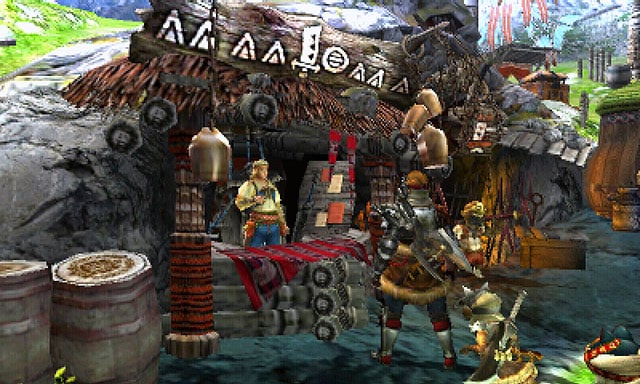
Some of the basic armor sets and a handful of items can be bought in the armory, but, as I've just said, it's pretty expensive, and the choice is not always big. One feature of the armory that justifies it's otherwise pointless existence is buying some cheap stuff that ca be upgraded later (this is a way for reach and lazy players). Another application of this place can be buying some cheap stuff to play with your friends who are on much lower level than you.
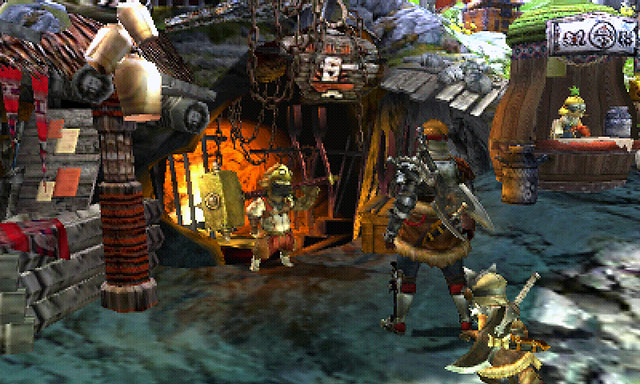
Real hunters use the services of a smith. He will make the best armors, decorations, and upgrades out of the materials you find. Even in case of poor equipment, he prices of making it from raw materials are half of what you'd have to pay in the armory. Not all weapons, armors or decorations will be available at once - at the beginning the choice is limited, but later on the list will swell to hundreds. Why? The equipment appears at the smith as we get newer and rarer items. If you gather one or two materials needed for crafting an item, it will appear on the list, telling you what else do you need. Usually it's easy to guess where the given materials come from, since their names suggest the monster from which they come, or what kind of material are they (plant, metal, crystal, or even a worm). Identifying the less obvious materials is helped by countless sources in the Internet, which you will find at the end of this guide.
Upgrading weapons and armor
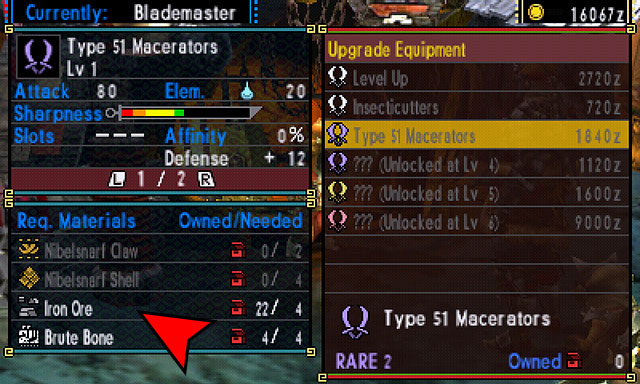
Another important role of the smith is upgrading weapons. Only weapons and armors can be upgraded - in case of decorations, you can only make a better decoration of the same effect but higher bonus. Upgrading the armor and weapons is a bit different. In case of both you can upgrade their level - the armors can only be upgraded in this aspect. The weapons, however, can evolve into hundreds of different contrivances. Some of the weapons are not visible right in the crafting window - that's because some "models" can only be obtained after upgrading a totally different weapon. Practically every weapon that you will ever find has a huge upgrade tree of it's own with many different branches. I will now emphasize that a weapon that was reworked to a different model will automatically go down to level 1, and has to grinded again. At the very beginning there's practically no point nor need to throw yourself into the whirlwind of crafting of new items - the equipment you get at the beginning should suffice for a good couple of hours if it's only upgraded - for a relatively low price.
Decorations and repairs
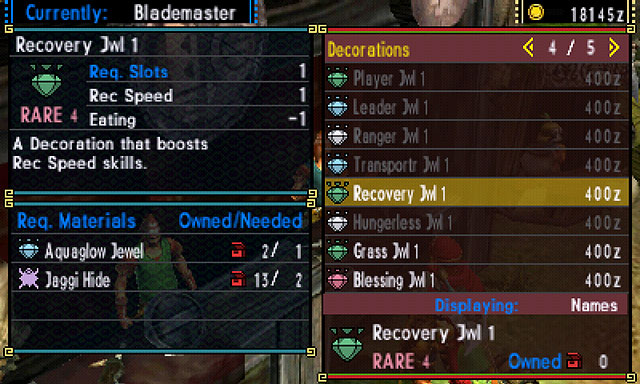
At the end, we have the decorations. As I've said earlier, they help you to unlock the full potential of the weapons. Much like the weapons and armor, new decorations will appear on the list as you gather more materials during hunts. At a smith, you can not only craft such decorations, but also place them on your armor or take them off. Removing the decorations doesn't destroy it, and it can always be used again in a different set.
Weapon and armor in MHGen doesn't break, so it never has to be repaired. Truth be told, the weapons go blunt during fights, but it's a temporary effect that wears off after you get back from a hunt. As you can guess, the best equipment is very expensive, and making it requires much time and effort. Additional cost for repairing would be too much.
Quick access items

Crafting doesn't end on the equipment here. All the quick equipment items such as tools, consumables, projectiles, oils and so on, can also be crafter by players. In this case, the it comes only at the price of materials that have to be used. You can combine materials by the so-called Combo in your equipment (also during hunts), or in the chest, by opening the Combine/Combo List window. The list will first be grayed-out with question marks, but along with getting new materials, the question marks will be whitened. This means that you have the materials needed for a given combo, but in order to know what will actually come out of a given combination, you have to try and make it. Some combinations have 100% chances of success by default; other, more exotic ones are a bit harder. In order to increase your chances, but the Book of Combos 1-5. At first, you won't be able to buy all the books, but in time they will appear at shopkeepers in villages. Each new book increases your chances for a successful combination. In order for the books to have an effect, you have to carry them with you (when you're combining stuff during a hunt), or in your chest (when combining at home).
Obtaining materials
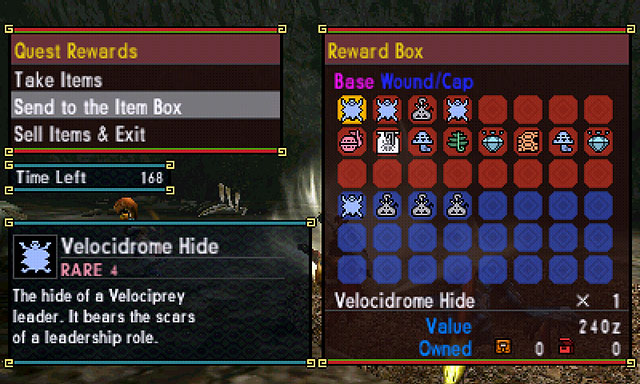
Let's now focus on the materials, because after all, it all comes down to them. Different kinds of materials will be awarded for completing quests - the amount will be random (often influenced by player's skill during a fight - later about this), but the kind of award will always be the same for each quest. Apart from the awards, you have two ways of obtaining materials: hunting (killing or catching monsters) and gathering.
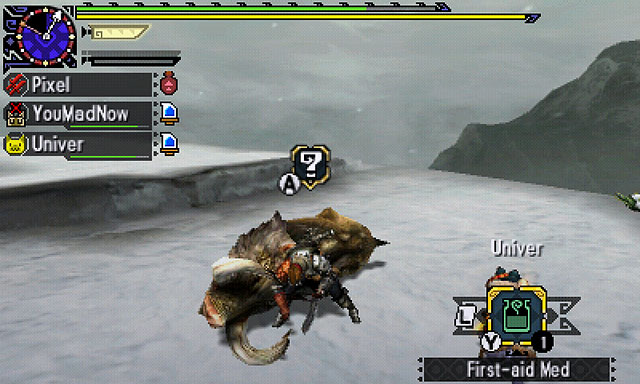
During some hunts, the amount and the chance to obtain a specific material wanted by the player, will depend on their efficiency during combat, and the method of dealing with a monster. Some materials can only be obtained after, for example, cutting the beast's tail off, or breaking its horns, or only by catching it. The knowledge of how to obtain the given material from each monster is far beyond the capabilities of a typical player, so the Internet will be of help.
Gathering
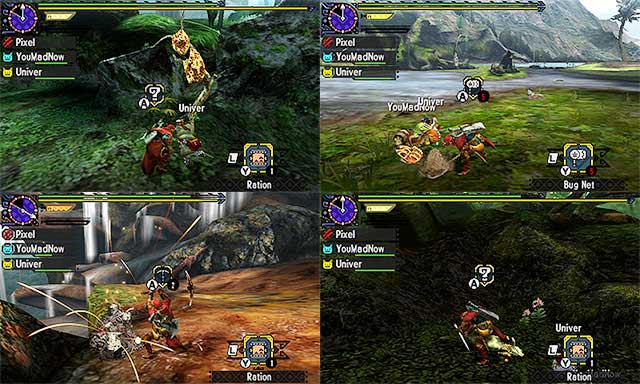
For the end, there's the gathering itself. On each map on which you will be doing quests there's a lot of sources of different materials, from metal ores to herbs and spider webs, to wild fauna not dangerous for the player.
The basic tools for extracting materials are an pickaxe and a web for worms. They both have a limited number of usages (partly random) which depends on their quality. Then, you only can take 5 pickaxes and 5 webs for a quest. Apart from quests that pose a specific challenge to players, there are also quests aimed purely at gathering (called "gathering-tours"). Most of the time those are tours devoid of any serious threats - such occurrences will happen much later in the game, so killing monsters is purely optional. During the first travels for loot, pay attention to all elements of the environment that stand out - colorful plants, swarms of fireflies, fish ponds, shining rocks, beehives, fallen tree trunks, scattered bones, and such. After some time you will be able to discriminate at first glance such elements from simple elements of environment design.
Transpurrter
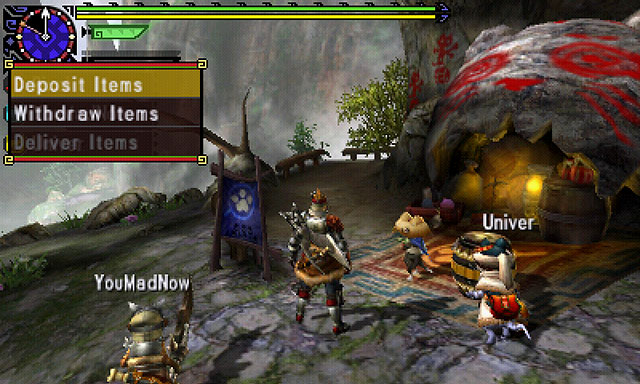
The biggest limitation during gathering is the capacity of the inventory. Fortunately, the amount of gathered material can be doubled by using Transpurrter, which is waiting near your camp. This is a currier cat to which you can give most of your inventory, and it will transport it back to the city. It can only be used during a quest, but it saves a lot of time anyway.
Prowler mode
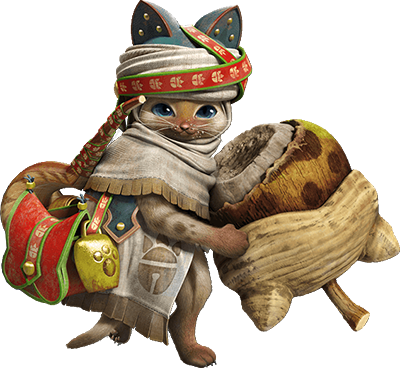
During detours aimed at gathering, it's a good idea to switch from Hunter to Prowler mode first (more about that in the next step), which can be done in home, by using the cat board. As a result, you will control one of the cat companions (Palicio), instead of your avatar. Such a solution has two important aspects: first, Prowler doesn't get tired, so you can run without any breaks for replenishing stamina. Second, the Prowler's tools don't break, which can save you some money or materials needed for making tools.
You are not permitted to copy any image, text or info from this page. This site is not associated with and/or endorsed by the developers and the publishers. All logos and images are copyrighted by their respective owners.
Copyright © 2000 - 2025 Webedia Polska SA for gamepressure.com, unofficial game guides, walkthroughs, secrets, game tips, maps & strategies for top games.
